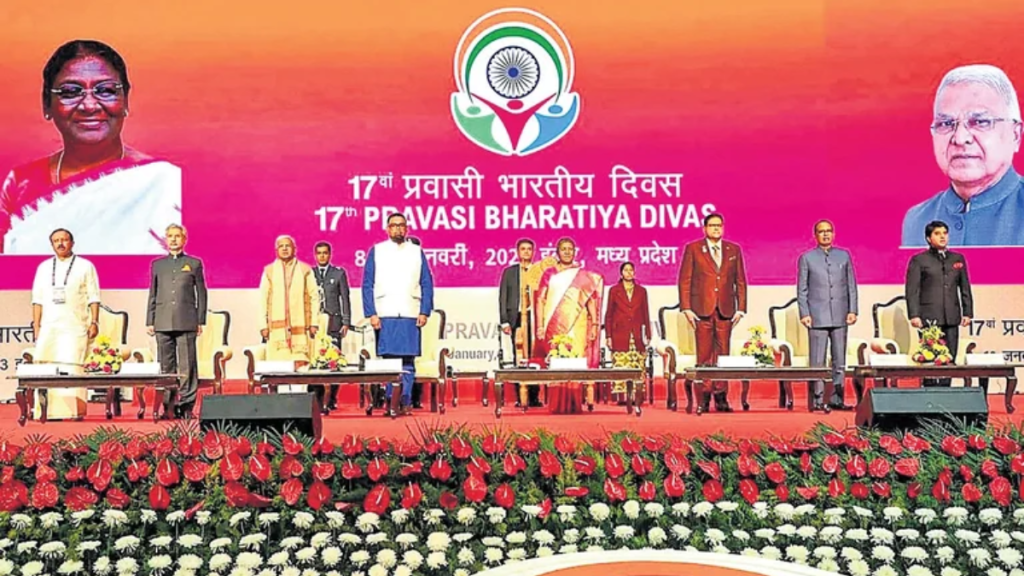The 18th Pravasi Bharatiya Divas (PBD) in Bhubaneswar, Odisha, starting tomorrow will feature a special exhibition titled “Vishwaroop Ram: The Universal Legacy of Ramayana.” This exhibition aims to explore the timeless influence of the Ramayana, an epic that continues to resonate deeply across cultures worldwide, bridging past and present, tradition and modernity.
The Ramayana’s Global Reach
The Ramayana is one of the most significant epics in India, yet its legacy extends far beyond the country’s borders. While the epic’s origins lie in India, it has inspired diverse cultures, religions, and societies around the world. The stories of Lord Ram, his principles of virtue, duty, and righteousness, and his epic journey of overcoming evil have transcended geographical and cultural boundaries, becoming a symbol of moral excellence and resilience.
Lord Ram is often seen as the archetype of Maryada Purushottam—the ideal man, whose life is a paragon of heroism and virtue. These ideals resonate across societies and are reflected in local interpretations of the Ramayana, from festivals celebrating the victory of good over evil to its adaptation in art, dance, music, literature, and even stamps and currency. The Ramayana’s themes are timeless, transcending national and cultural borders. Its values, such as the importance of personal sacrifice for the greater good and adherence to dharma (righteous duty), continue to find relevance in the world today, making it a universal narrative of enduring appeal.
For generations, even those far removed from India, such as the Indian diaspora, have preserved the stories and values of the Ramayana. The epic has served as a source of strength for many, especially those who faced adversity—like the indentured labourers (Girmitiyas) who were inspired by the narrative’s resilience in overcoming hardships.
An Immersive Experience: The Exhibition’s Concept and Execution
The exhibition “Vishwaroop Ram: The Universal Legacy of Ramayana” will highlight the global cultural and artistic impact of the Ramayana. It will showcase an extraordinary collection of over 150 exhibits, which include 66 Indian artifacts and 80 international pieces representing various countries that have incorporated Ramayana’s themes into their cultures.
The exhibition will be organized into two key parts:
Physical Exhibits: A Tapestry of Art and Culture
This section will present a wide range of artifacts from both India and abroad. It will include:
• Masks, paintings, and puppets from countries like Thailand, Indonesia, and Cambodia, reflecting how the Ramayana has been depicted through traditional art forms.
• Music instruments, such as the Ravanhattha, a string instrument traditionally played by Ravana from Sri Lanka.
• Ramayana-related postal stamps and coin collections from countries like Nepal, Canada, and New Zealand, showcasing the global recognition of the Ramayana’s significance.
• Life-size displays like the Ravana piñata from Mexico, symbolizing the cultural blending of the Ramayana with local traditions.
This portion of the exhibition serves to show how various countries have adopted, reinterpreted, and celebrated the Ramayana through unique local expressions, enriching their cultural and spiritual practices.
Digital Wall: A Visual Journey Across the Ramayana’s Global Influence
A striking feature of the exhibition will be a massive digital LED wall (25 ft x 11 ft) that highlights the Ramayana’s impact across 22 countries. This interactive display will illustrate how different cultures around the world have adapted the Ramayana through historical, cultural, and artistic lenses. The participating countries include:
Thailand; Sri Lanka; Cambodia; Indonesia; Japan; China; Nepal; Russia; Canada; Trinidad & Tobago; Mexico; Guyana and many more.
This digital showcase will also feature cultural narratives, revealing the ways in which the Ramayana has influenced local traditions, festivals, performances, and even political history.
A Journey of Cultural Discovery
The “Vishwaroop Ram” exhibition is more than just an artistic presentation. It is a journey through the ages, showing how the Ramayana’s teachings of righteousness, courage, and justice have been passed down and reimagined by different cultures across time. The exhibition demonstrates that the Ramayana’s message is not confined to India but is a universal story, cherished and adapted by communities around the world.
As the Indian diaspora remains a vital part of this global narrative, this exhibition will serve as a reminder of the shared cultural and spiritual heritage that connects Indians abroad with their roots.

